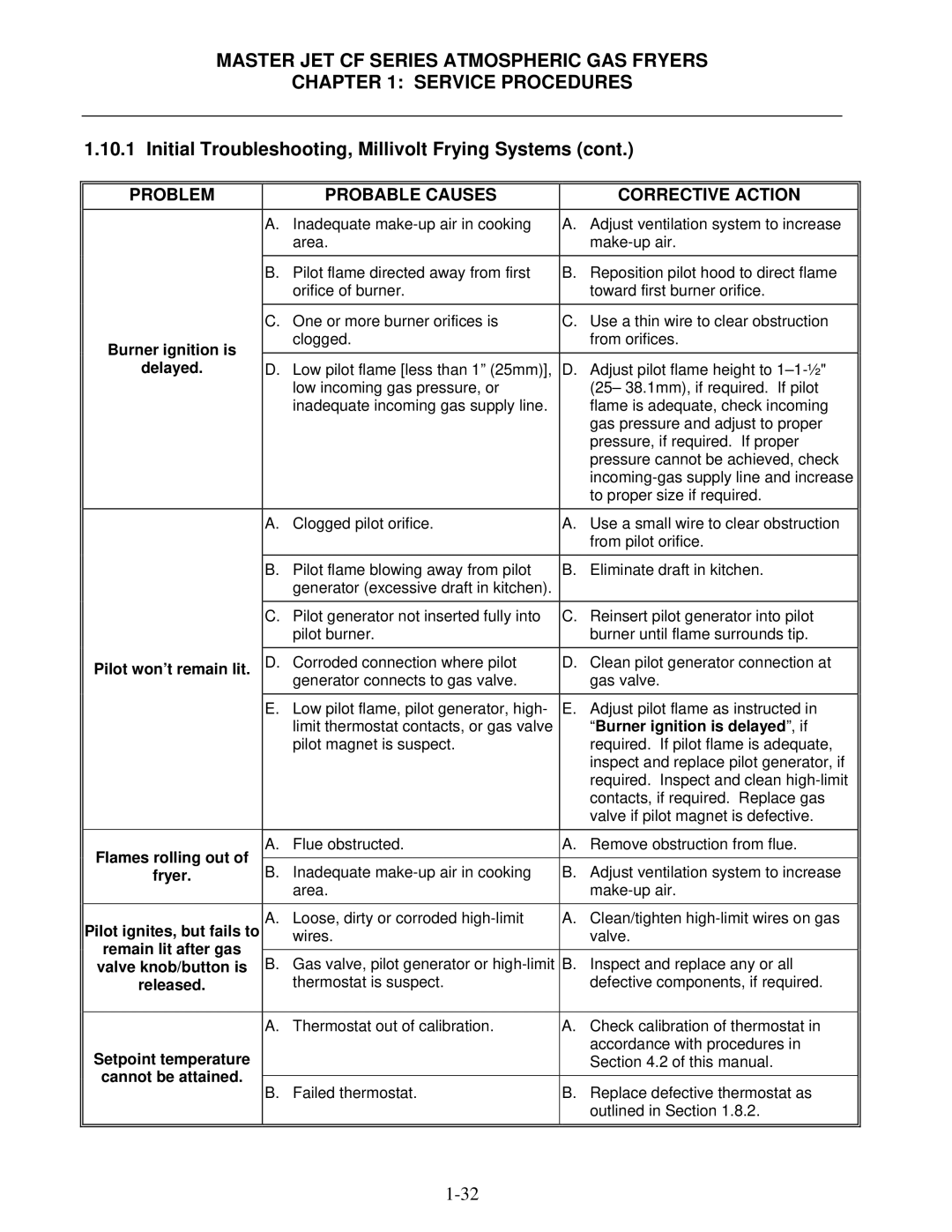JCFX, J65X, J3F, KJ3FC, MJCF specifications
Frymaster, a leading manufacturer of commercial frying equipment, offers a range of fryers tailored to meet the demands of various food service operations. Among their notable products are the FMCFEC, MJCFEC, MJCF, JCFX, and FMCFE models. Each of these fryers is designed with cutting-edge technology, emphasizing efficiency, performance, and ease of use.The FMCFEC model stands out for its advanced filtration system, which provides exceptional oil management. This feature helps extend the life of cooking oil, delivering consistent frying quality while reducing operational costs. The FMCFEC is equipped with a digital controller that simplifies temperature management, ensuring food is cooked to perfection every time.
The MJCFEC is another remarkable model in Frymaster's lineup, featuring a versatile design suited for quick-service and casual dining establishments. It boasts a compact footprint while still offering a large frying capacity, enabling operators to maximize their output in limited space. Additionally, the MJCFEC incorporates energy-efficient technology, resulting in lower utility bills and a reduced environmental impact.
The MJCF model is geared toward high-volume frying, utilizing a powerful heating system that ensures rapid oil recovery. This fryer's heavy-duty construction enhances durability, making it ideal for busy kitchens where reliability is paramount. The MJCF model also features a straightforward interface, allowing staff to operate it with minimal training.
The JCFX model is designed with flexibility in mind, allowing for customizable frying options. This fryer offers multiple frying baskets and a range of temperature settings, making it suitable for various menu items, from fries to seafood. Its user-friendly digital controls enhance operational efficiency, making it easier for kitchen staff to manage frying times and temperatures.
Lastly, the FMCFE model emphasizes energy savings and oil conservation without sacrificing performance. This fryer incorporates advanced technology to monitor oil quality and usage, allowing operators to optimize their frying processes. The FMCFE's design focuses on safety, with features that minimize the risk of burns and splatters in busy kitchen environments.
In summary, Frymaster’s FMCFEC, MJCFEC, MJCF, JCFX, and FMCFE models reflect the company's commitment to innovation and quality in commercial frying equipment. With their distinctive features, energy efficiency, and user-friendly designs, these fryers are well-suited for a variety of food service applications, providing operators with reliable performance and exceptional results.
